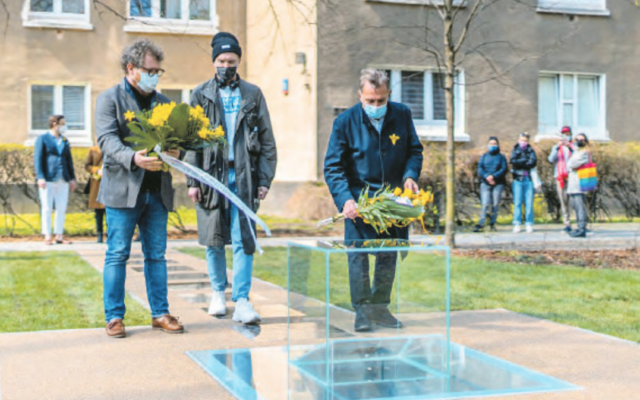Recording the history of the Warsaw ghetto
'Every survivor who has shared his or her story has engaged in resistance'

During the interminable German occupation, Jews throughout Europe found many ways to resist. They hid themselves, they concealed their identities and they sought to flee; where that was impossible, they found ways – unorganised and unplanned – to maintain a shred of normality for themselves, for their families and for their fractured community.
While some Jews found ways to physically resist their tormentors, others recognised that the struggle against Nazism would not be won by force of arms, but through the preservation of information. To equip the next generation with the materials that they would need, they frantically recorded all that was transpiring around them. Little did they appreciate how valuable those photographs and documents would be.
One of the most significant collections was the secret archive managed by the young historian, Emanuel Ringelblum. Although he was murdered in 1944, he was survived by a collection of documents that owes its very existence to him and to his team. Running to over 30,000 individual pages, these materials concern interviews with refugees to the Warsaw Ghetto, personal journals, essays on aspects of life under occupation, poetry and art.
Such archives, produced in a dozen different ghettos and places of hiding or concentration, give us an invaluable insight into life during the Holocaust. They are but a sliver of that which was lost, but are all the more valuable for that fact. If the secret archive of the Warsaw Ghetto was at all unique, it was in respect not only of its size and its comprehensive nature, but in respect of the use to which it was put.
In 1942, it became increasingly apparent to the ghetto archivists that they would most likely not survive the war. In light of the ever-worsening situation, disseminating the information that they had been producing became a matter of some urgency. Perhaps if the world knew what was transpiring, the involvement of other countries in the rescue of Jews could be secured? Perhaps, if other people were aware of the destruction, they might help bring it to an end?
June 26, as Ringelblum recorded in his diary, was a momentous day. That day, at dawn, on an illegal radio in his secret possession, he listened to the BBC. On live broadcast, they described the violence with which he, himself, was most familiar: the murder of Jews in Slonim, pogroms in Lvov and in Vilna, and the day-to-day operations of the death camp in Chelmno. These were all materials compiled under the auspices of Ringelblum’s archive.
Slowly, carefully and with great attention to detail, the documents concerning these atrocities had been copied and smuggled out of the ghetto to members of the Polish underground. Bravely, those members of the Polish resistance transported the documents in question to England, where it was delivered to the Polish government in exile, and from them to the BBC.
It is hard to imagine the impact on this one man of hearing – behind the high walls of the Warsaw Ghetto – the materials that he had so carefully curated, read out to the world. It is hard not to share in his enthusiasm, and to partake in the belief that the tribulations of the Jews must surely be reaching their end.
Although the BBC report did nothing to forestall the murder of Jews throughout Europe, allowing this information to be disseminated was an act of resistance most extraordinary in its scope. Knowing what was yet to transpire should not in any way lessen our appreciation for what they succeeded in doing that one day in June. While 80 years have passed since then, their intentions are ones that we continue to share.
The mission of alerting the world of the Holocaust did not end with the destruction of Jewish life throughout Europe. Although it ceased to be possible to prevent those atrocities, ensuring that they are recorded became all the more important. Every survivor who has shared his or her story in the years since the war has engaged in resistance – resistance against those who would prefer this history to be forgotten.
Those who would like to engage more with this history are encouraged to connect with their local Holocaust museum.
Now more than ever, it is critical that we preserve and that we transmit the messages of the Holocaust – the better that people know of the destruction that was wrought, and of the many forms that Jewish resistance took.
Dr Simon Holloway is manager of adult education and academic engagement at the Melbourne Holocaust Museum.

comments